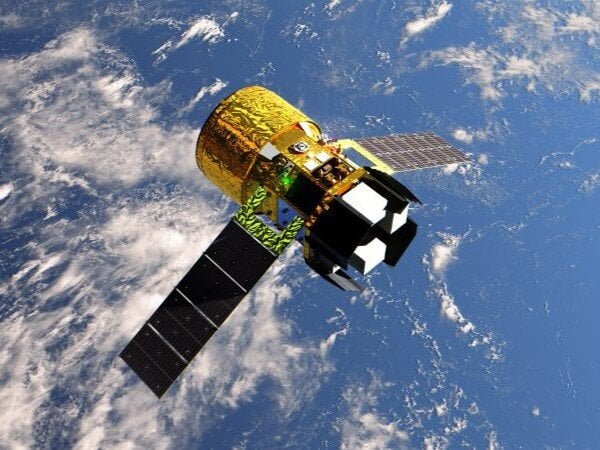GS Yuasa’s Space-use Lithium-ion Batteries Installed in Quasi-Zenith Satellite No. 6 - Contributing to the provision of reliable satellite positioning -
February 4, 2025
GS Yuasa Corporation
GS Yuasa Corporation (Tokyo Stock Exchange: 6674; “GS Yuasa”) today announced that space-grade lithium-ion batteries manufactured by GS Yuasa Group company GS Yuasa Technology Ltd. (“GYT”) have been installed on the Quasi-Zenith Satellite No. 6 (hereinafter referred to as “Michibiki No. 6”), manufactured by Mitsubishi Electric Corporation. Michibiki No.6 is a Cabinet Office satellite that was launched on February 2, 2025 from the Tanegashima Space Center of the Japan Aerospace Exploration Agency (JAXA).
The Quasi-Zenith Satellite System*1 is utilized in coordination with the U.S. Global Positioning System (“GPS”) to provide a highly precise and reliable satellite positioning service*2 that can be used even in mountainous regions and urban high-rise areas. The service is utilized in a wide range of applications including self-driving vehicle systems, marine navigation, and logistics.
The Quasi-Zenith Satellite System has offered services as a four-satellite constellation since 2018, but Michibiki No. 6 is one of three satellites being added to the seven-satellite constellation. It will take over the role of providing satellite positioning services that have been provided by the previous four-satellite constellation, and is expected to provide more stable services.
Since the completion of successful orbital testing in the early 2000s, GYT’s space-use lithium-ion batteries have been used in more than 250 domestic and overseas spacecraft. Based on this track record, and in recognition of their ability to perform in the high-vacuum environment of space for long periods of time, they were adopted for the “Michibiki No. 1” (the first Quasi-Zenith Satellite) through “Michibiki No. 4”, Michibiki No. 1R and finally “Michibiki No. 6.”
The GS Yuasa Group will continue to contribute to the advancement of society by installing products of the highest quality and performance in satellites that play a key role in the building of social infrastructure.
*1 A Japanese satellite positioning system based on a constellation of satellites in a quasi-zenith orbit (satellite positioning systems provide geolocation information using calculations based on radio waves transmitted from satellites). The Basic Plan on Space Policy calls for the establishment of a seven-satellite constellation, with plans to eventually expand to 11 satellites.
(Source: Based on the Cabinet Office of Japan, Quasi-Zenith Satellite System website https://qzss.go.jp/en/overview/services/sv01_what.html and the Cabinet Office of Japan, Basic Plan on Space Policy website https://www8.cao.go.jp/space/english/basicplan/basicplan.html)
*2 Through the transmission of signals at the same frequency and same timing as GPS satellites, this service can be used in coordination with the GPS service to facilitate reliable geopositioning.
(Source: Based on the Cabinet Office of Japan, Quasi-Zenith Satellite System website https://qzss.go.jp/en/overview/services/sv04_pnt.html)
1. The quasi-zenith satellite “Michibiki No. 6” (Source: Cabinet Office of Japan’s Quasi-Zenith Satellite System website) https://qzss.go.jp/

2. Cells used in GS Yuasa’s space-use lithium-ion batteries




